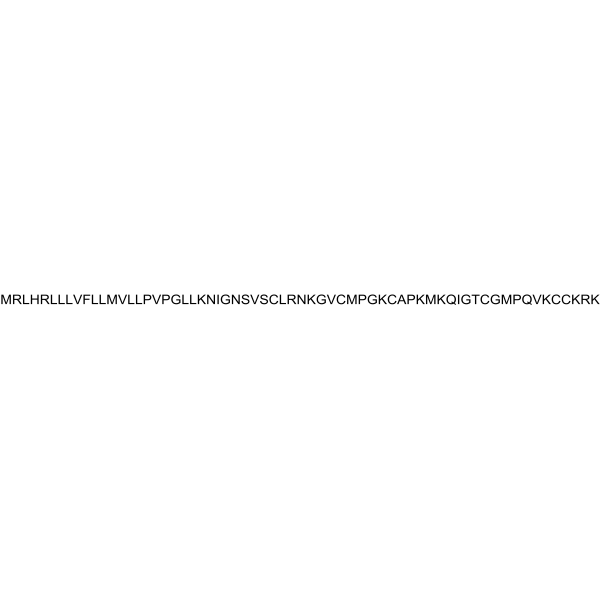Shopping Cart
- Remove All
 Your shopping cart is currently empty
Your shopping cart is currently empty

pBD-1 is an endogenous and constitutively expressed antimicrobial peptide (AMP) from porcine tissues, particularly expresses in pig mucosal epithelial sites with the contribution of mucosal and systemic host defenses in pigs.

| Pack Size | Price | Availability | Quantity |
|---|---|---|---|
| 100 mg | Inquiry | Backorder | |
| 500 mg | Inquiry | Backorder |
| Description | pBD-1 is an endogenous and constitutively expressed antimicrobial peptide (AMP) from porcine tissues, particularly expresses in pig mucosal epithelial sites with the contribution of mucosal and systemic host defenses in pigs. |
| Targets&IC50 | Antibacterial: |
| In vitro | In a northern blot analysis, pBD-1 mRNA only expresses in tongue epithelial tissues from 4-5 week-old pigs. In RT-PCR analysis, pBD-1 message throughout the epithelia of the respiratory (from the nasal septum to lung) and gastrointestinal (from the esophagus to rectum) tracts. In addition, it is detected in thymus, liver, kidney, urinary bladder, spleen, lymph node, brain, testis, skin, heart, muscle, bone marrow, alveolar macrophages, peripheral blood neutrophils, and the umbilical cord. The only cells that do not express pBD-1 are peripheral blood mononuclear cells. |
| Molecular Weight | 7065.98 |
| Formula | C310H543N91O73S11 |
| Cas No. | 206367-33-1 |
| Relative Density. | no data available |
| Storage | keep away from moisture | Powder: -20°C for 3 years | In solvent: -80°C for 1 year | Shipping with blue ice. |

Copyright © 2015-2025 TargetMol Chemicals Inc. All Rights Reserved.